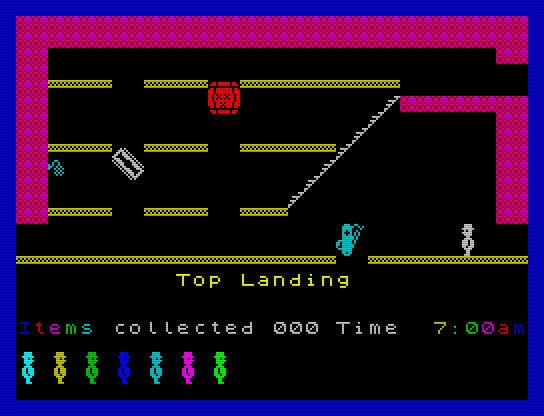Jet Set Willy
The miner is in the mansion.
When is a sequel not a sequel? Jet Set Willy is both the question and the answer. This is, technically and without reservation, the sequel to Manic Miner. It looks the same, it's got the same main character, the gameplay is pretty much identical and the author, Matthew Smith, says it's the sequel. And yet, it isn't.
To craft a game of this magnitude and surrealism is a historic accomplishment, regardless of its slippery heritage. But we have very specific expectations from sequels, whether they're games, films, book or whatever. It must exhibit recognisable gameplay and at the same time be different, bigger and more challenging while expanding on the main character's universe and personal history. It might have been 1984, but we still expected these elements when Miner Willy returned to our Spectrum driven screens.
The wonderfully unwell mind of Smith was more than prepared, however; attacking our expectations from the side and bowling them over, unaware and unprepared. This isn't a continuation in the life of Miner Willy, but another chapter - an alternative glance at the warped universe of an inexplicably alluring character who, in this instance, simply wants to go to bed after a particularly rampant party at his massive new 60-room mansion. His vitriolic house keeper blocks his way to convivial slumber, and Willy must do her job (clean up) before well earned retirement. As with all good literature (yes, I consider Jet Set Willy to be a form of interactive, graphic literature on a par with Gabriel Marquez and Angel Carter), Willy's story is shown, concisely and profoundly, rather than told.

The two most important aspects of character identification are "want" and "need", and seldom in the history of games have these vitalities been better portrayed than in Jet Set Willy - precisely the reason we're so inexplicable drawn toward his games and consider his progenitor to be on a different creative level to us mortals who play the games.
